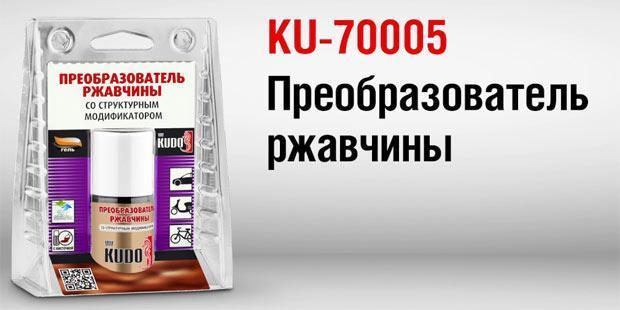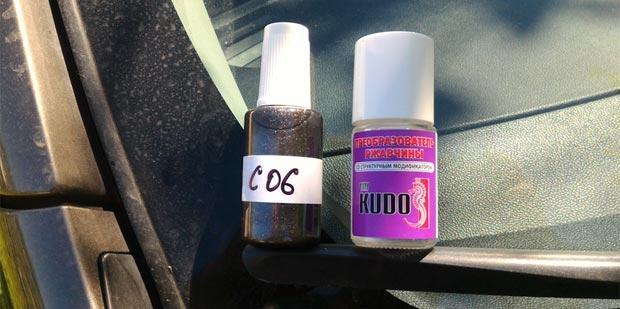
Rust converter KUDO
Content
Composition and main characteristics
This product is manufactured in accordance with TU 2384-026-53934955-11 and includes the following components:
- orthophosphoric acid.
- Neutral surfactants.
- corrosion inhibitors.
- cationic polymers.
- active zinc compounds.
- Oxyethylene diphosphonic acid.
The solvent is water, which increases the environmental safety when using.


The mechanism of action of the rust converter KUDO is based on the fact that in an aggressive environment with a high content of oxygen-containing substances, the surface film of phosphates limits the access of active oxidant ions into the metal, which slows down the oxidation of the surface. At the same time, the presence of surfactants simultaneously cleans this surface, and polymer compositions increase the degree of adhesion of phosphate films to metal and slow down the adhesion of small mechanical particles, dust, etc.
The main thing is that the composition in question allows you to perform a complete structural modification of the coating that is formed on the car. This KUDO differs from other, more budgetary brands (here we mention the rust converter fenom).


What is structural modification and how does it work?
The basic kit Kudo 70005 is supplied to the distribution network in the form of a gel, and is supplied with a brush. The gel consistency facilitates the mechanism of interaction of the components with the base metal. It happens in this sequence:
- The composition is applied to a previously cleaned surface (its slope does not play a role, since the viscosity of the composition is quite high);
- In the process of application, a mechanochemical reaction occurs, the product of which is an emerging film of iron salts and phosphoric acid;
- This film, under the influence of external conditions (temperature, humidity, blowing), is structurally modified, turning from a viscous liquid into an amorphous substance (this is facilitated by the continuous deionization of the surface);
- In the process of plasticization, the film acquires increased flexibility and resistance to bending, which increases the durability of the coating and its susceptibility to mechanical stress;
- Corrosion products are bound by the modifier and form a loose mass, which is then easily removed from the surface.
It should be noted that the described process is ineffective for the corrosion process that has already begun, in which the rate of propagation of iron oxides inside becomes high.


How to use?
The instruction from the manufacturer of the rust converter KUDO recommends the following operations (all work must be carried out at an external air temperature of 10°C and above):
- Using a metal brush, clean the surface without scratching.
- Shake the container with the composition thoroughly, since cationic polymers accumulate at the bottom during long-term storage.
- Using a brush, apply the converter to the metal surface.
- Wait at least half an hour, then repeat the application of KUDO.
- After that, wait up to 40-45 minutes, then wash off the film with plenty of water (preferably running water).
- Wipe the treated area with a soft dry cloth.


Subsequent painting must be carried out no later than two days after treatment, otherwise rust converter residues, which may remain in hard-to-reach places, may polymerize and impair the durability of the paint layer.
Readiness for painting the surface can be determined by its color - it should be a uniform light gray shade.
Attention! Work must not be carried out in the wind - dust particles, settling in the cracks, will degrade the quality of processing.


Watch this video on YouTube